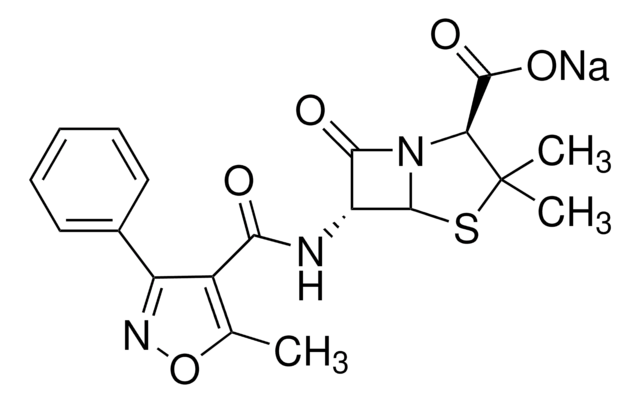推荐产品
產品線
BioReagent
化驗
≥99%
形狀
powder
技術
cell culture | insect: suitable
cell culture | mammalian: suitable
mp
>300 °C (lit.)
溶解度
H2O: 100 mg/mL
密度
1.78 at 20 °C
應用
metabolomics
儲存溫度
2-8°C
SMILES 字串
[Na+].CC(=O)C([O-])=O
InChI
1S/C3H4O3.Na/c1-2(4)3(5)6;/h1H3,(H,5,6);/q;+1/p-1
InChI 密鑰
DAEPDZWVDSPTHF-UHFFFAOYSA-M
正在寻找类似产品? 访问 产品对比指南
一般說明
應用
- 培养 MCF7ρ0(人乳腺癌细胞系)细胞作为母细胞
- 作为细胞外流量(XF)检测培养基添加剂,培养细胞用于测定耗氧率(OCR)
- 作为Eagle最低必需培养基添加剂,培养乳腺癌细胞(MCF-7)
- 作为杜氏改良Eagle培养基(DMEM)类培养基和改良Eagle培养基(MEM)-α,用于睾丸细胞培养,评估培养基组分体外维持SSC的作用
生化/生理作用
特點和優勢
- 经过细胞培养和昆虫细胞培养验证
- 用途广泛,适用于多种实验室和研究应用
- 用于细胞生物学和生物化学研究的BioReagent级琥珀酸钠
- 针对哺乳动物和昆虫细胞培养应用进行测试
同類產品
訊號詞
Warning
危險聲明
危險分類
Eye Irrit. 2 - Skin Sens. 1B
儲存類別代碼
13 - Non Combustible Solids
水污染物質分類(WGK)
WGK 1
閃點(°F)
Not applicable
閃點(°C)
Not applicable
個人防護裝備
Eyeshields, Gloves, type N95 (US)
其他客户在看
商品
Information on fatty acid synthesis and metabolism in cancer cells. Learn how proliferatively active cells require fatty acids for functions such as membrane generation, protein modification, and bioenergetic requirements. These fatty acids are derived either from dietary sources or are synthesized by the cell.
We presents an article about the Warburg effect, and how it is the enhanced conversion of glucose to lactate observed in tumor cells, even in the presence of normal levels of oxygen. Otto Heinrich Warburg demonstrated in 1924 that cancer cells show an increased dependence on glycolysis to meet their energy needs, regardless of whether they were well-oxygenated or not.
我们的科学家团队拥有各种研究领域经验,包括生命科学、材料科学、化学合成、色谱、分析及许多其他领域.
联系技术服务部门









